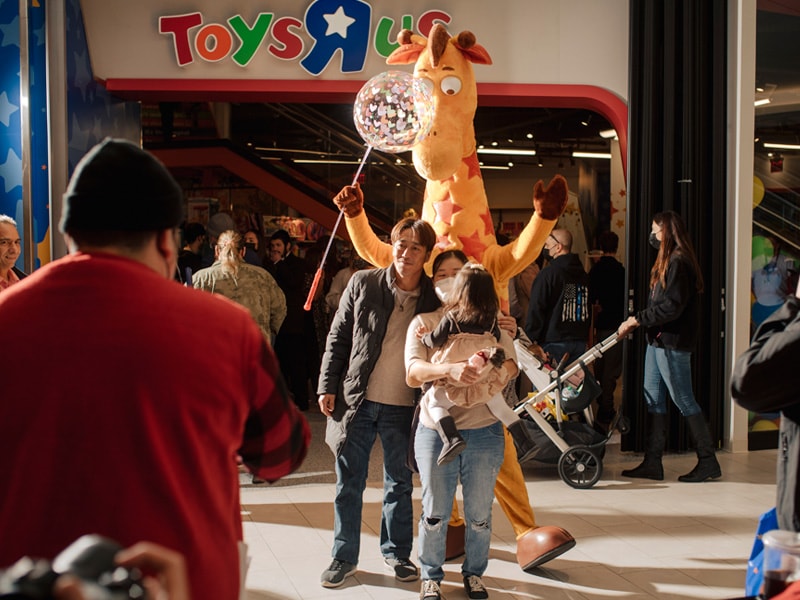
Toys 'R' us tries to come back, four years after bankruptcy
Four years after filing for Chapter 11 bankruptcy protection and three years since closing its 735 stores, the brand that Charles Lazarus started in 1957 has been raised from the dead in time for last-minute holiday shopping
 Geoffrey the Giraffe at the opening of the Toys R Us at the American Dream mall in East Rutherford, N.J., Dec. 21, 2021. Toys R Us, which had closed all its 735 U.S. stores, has resurfaced at the New Jersey mall, hoping to appeal to kids and nostalgic adult shoppers. (Clark Hodgin/The New York Times)
Geoffrey the Giraffe at the opening of the Toys R Us at the American Dream mall in East Rutherford, N.J., Dec. 21, 2021. Toys R Us, which had closed all its 735 U.S. stores, has resurfaced at the New Jersey mall, hoping to appeal to kids and nostalgic adult shoppers. (Clark Hodgin/The New York Times)
EAST RUTHERFORD, N.J. — It was 11 a.m. six days before Christmas, and a security guard in a bulletproof vest eyed 120 masked customers standing in line at the entrance to the newest retailer at the American Dream mall: Toys “R” Us.
When workers slid open two side gates, shoppers surged in. Lauryn Dankin, 10, walking with her mother, Caren, grabbed a blue cart and was greeted by a sign:
“NOTICE: Staircase is not accessible yet.”
Neither the cafe nor the slide that starts on the second floor and falls to the first was ready for customers. Lauryn walked past a magician practicing sleight of hand and approached Carl Zealer, who was working through a trick involving a worm on a string.
“I have a question,” she said. “Is that static, or is it all an illusion?”
©2019 New York Times News Service







